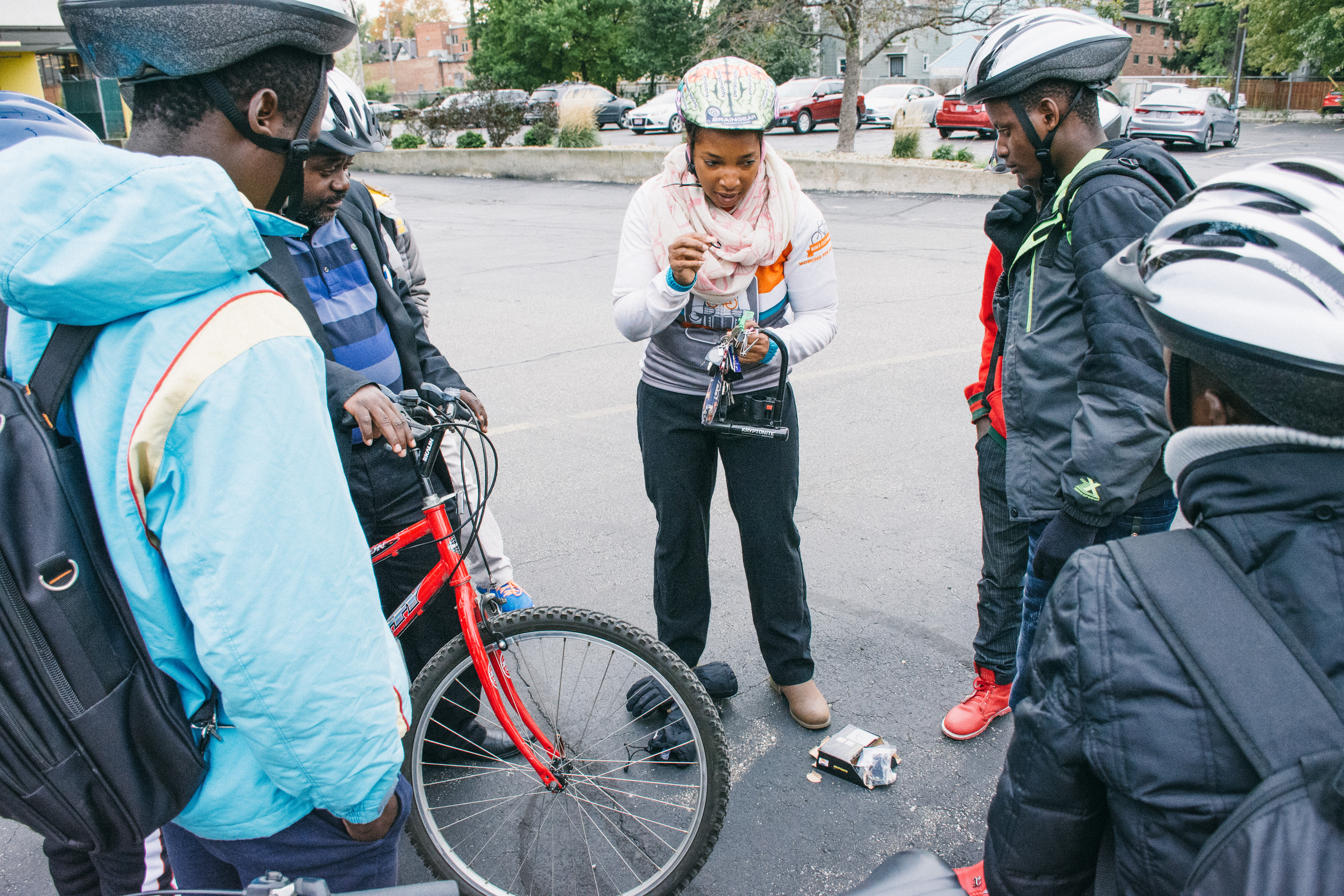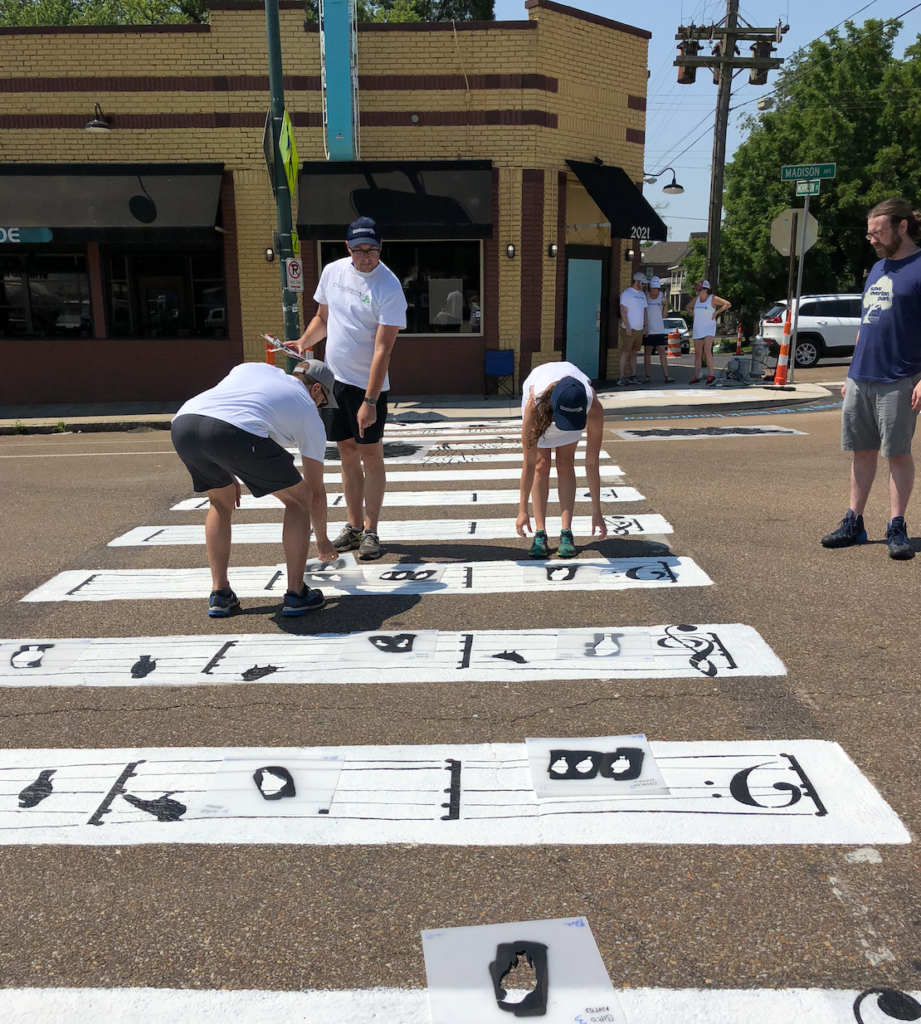Active transit refers to any form of transportation that does not require a car to get around. This includes walking, biking, and taking public transportation such as the subway or the bus. In fact, many of us participate in active transit each and every day in neighborhoods without knowing it.
More and more communities around the country (and world!) are turning to active transit projects in the face of climate catastrophe—and an overall desire to create communities that are more connected, easier to navigate, and safer.
To help highlight and support these projects, ioby recently created an Active Transit Toolkit. In that guide, which you can access HERE, we’ve outlined everything you need to know to start an active transportation project . This includes strategies for fundraising, building community buy-in, and even navigating city politics. So, read on for a brief introduction and make sure to check out our toolkit for more!

How Can Active Transit Build Communities?
When you close your eyes and imagine a thriving neighborhood, what do you see? If we can take a guess, it’s not a street clogged up with traffic and polluted air. It’s likely a place where children can safely and freely ride their bicycles to school, or an electric-powered bus that comes on time and helps elders in our communities get around more easily.
At the most basic level, active transportation helps us transform our communities from “car-centric” to “people-centric.” At one organization we featured in our Active Transit Toolkit, organizers in the Providence Streets Coalition were able to successfully advocate for 35 square miles of urban trials. This made the Rhode Island town more walkable and, by extension, a more desirable place to live.
Advocating for Active Transit projects can itself be a form of community building. As Liza Burkin, the founder of the Providence Streets Coalition, noted, bringing together all forms of vulnerable road users—such as skateboarders, bikers, and people in wheelchairs—helped their coalition make progress that would not otherwise have been possible. “The streets of Providence belong to all of us. They are the veins that pump our community, economy, and family life,” she says.

How Can Active Transit Stop Climate Change?
The largest contributor to climate change is carbon dioxide, or CO2. CO2 is released into the atmosphere from burning fossil fuels that power cars, ships, and airplanes. Over the next decade, countries around the world are working to rapidly reduce their reliance on oil. One of the largest ways we can do that—as individuals and on the collective scale—is to invest in infrastructure and technologies that make it easier to get around without fuel.
While this is happening at the Federal level based on policy such as the Inflation Reduction Act, which provided billions of dollars to electrify the American grid and invest in renewable resources, communities have taken meaningful steps to create change in their communities, as well.
A perfect example of that is making it easier for people to get around on bikes. Project leader Adé Neff realized that one of the challenges of biking is that people don’t often have access to affordable bike shops. If they get a flat tire or their brakes , repairs can be time-consuming and costly. To address this, Neff created the Ride On! Bike Coop in South Los Angeles, California. Neff provides residents with low or no-cost repairs, as well as classes to learn how to ride for young people. He hopes that this will incentivize biking in notoriously car-centric Los Angeles.
Neff is clear that active transportation is a form of equity to ensure that a city benefits everyone. “Transportation equity is just looking at all those aspects of transportation and seeing how we can make it equitable for everyone within the city. Whether you are a car owner or somebody that doesn’t own a car, if you have a bike, if you walk, how do we make the city affordable and accessible to everyone?” he says.

How can I get started in my community?
Luckily, we’ve created our Active Transit Toolkit to answer that very question! But below, we’ve gathered some of their best tips to help jumpstart your project.
- Experience the city in different ways. If you’re used to driving everywhere, says Neff, one of the best ways to get started is to get out of your car. What is it like to take the bus to work everyday for a week or ride your bike to the grocery store? Experiencing the city in new ways can help you notice challenges you might not have before, and will ensure your advocacy is more intersectional, or inclusive of many different life experiences and perspectives.
- Cultivate Your Story. Stories are at the heart of any movement for social change. Articulating why you want to develop an Active Transportation project in your neighborhood will help people get involved—and drive resources. For example, the organizers of #ChrisCrosswalk launched a project to create a more bike and pedestrian-friendly intersection in Memphis after their dear friend Chris was killed in a hit-and-run. Their story honored his memory and clearly articulated why creating bike-friendly cities is essential for public safety.
- Build a coalition. As Liza Burkin emphasized above, bringing together a variety of vulnerable road users makes your group more powerful. There might be more drivers than bikers in your city—but what if you combined all the people who walk, use wheelchairs, take public transportation, and bike? By showing up to city council and fundraising meetings as a team, you’ll show the need for cities that support people beyond cars. There is power in numbers.
- Crowdfund! While there has been an increase in state and federal funding for climate-related projects, crowdfunding is still one of the best ways to ensure your work is by and for the community. This is particularly important for Active Transportation projects, which are usually deemed successful if a large number of community members participate in them. Burkin’s 35 miles of increased safe streets for road users are a perfect example. Active transportation projects literally pave the way for community engagement.
- Don’t be afraid to ask questions. Transportation projects can be extremely confusing and require several moving parts, from local county agencies to the federal government and everything in between. However, as a resident, you have a right to understand how these projects work and shape them to fit your communities’ needs. Don’t be afraid to reach out to city council members, community organizers, and ioby staff with questions. It’s the only way to create neighborhoods that truly work for everyone.
Hungry for More Resources?
Check out ioby’s Active Transit Toolkit, which features ideas, resources, and inspiration from more than 50 organizations around the country. If you get an idea and need some help, don’t hesitate to reach out for questions and support!
ioby is a national crowdfunding nonprofit, but we’re much more than that. We help connect leaders (like you!) with one-on-one coaching and support to raise the money they need from their communities to make our neighborhoods safer, greener, more livable, and more fun.
Have a great idea to get good done in your neighborhood? We want to help! Share your idea with us and we can help get you started.